As mentioned in the title, I'm hoping to visualize my result in the appendix.
where the red lines are drawn by programs given some specific degree angles. Is there a module in python that provide such functions? How can I do this?
As mentioned in the title, I'm hoping to visualize my result in the appendix.
where the red lines are drawn by programs given some specific degree angles. Is there a module in python that provide such functions? How can I do this?
As commentet the linked awnser Plot over an image background in python shows how to use matplotlib to plot simple geometrics over an existing image. If you want something more sophisticated (which also maybe changed over time) matplotlib would work but maybe will not perform as you want and includes a lot of code for all the element that you want to overlay.
Instead you should provide your overlay as an image and rotate it with opencv and the overlay the matrices.
I provide you a simple example:
Here we have the background Image:
We want to overlay the following circle:
and this cross, but rotated by 36 degree:
The following code will provide the wanted result:
import cv2
import numpy as np
def rotate_image(image, angle):
image_center = tuple(np.array(image.shape[1::-1]) / 2)
rot_mat = cv2.getRotationMatrix2D(image_center, angle, 1.0)
result = cv2.warpAffine(image, rot_mat, image.shape[1::-1], flags=cv2.INTER_LINEAR)
return result
def overlay_images(img1, img2):
if img1.shape[2] != 4 or img2.shape[2] != 4:
print('png needs Alphachannel!')
return
alpha_img1 = img1[:,:,3] / 255.0
alpha_img2 = img2[:,:,3] / 255.0
for color in range(0, 3):
img1[:,:,color] = alpha_img2 * img2[:,:,color] + \
alpha_img1 * img1[:,:,color] * (1 - alpha_img2)
img1[:,:,3] = (1 - (1 - alpha_img2) * (1 - alpha_img1)) * 255
return img1
img_bg = cv2.imread('img1.png',cv2.IMREAD_UNCHANGED)
img_circle = cv2.imread('img2.png',cv2.IMREAD_UNCHANGED)
img_cross = cv2.imread('img3.png',cv2.IMREAD_UNCHANGED)
img_rotate_36 = rotate_image(img_cross, 36)
img1_2 = overlay_images(img_bg, img_circle)
img1_2_3 = overlay_images(img1_2, img_rotate_36)
cv2.imwrite('img_rotated.png', img1_2_3)
cv2.imshow('Rotatet Image', img1_2_3)
cv2.waitKey(0)
cv2.destroyAllWindows()
The interesting part are the rotation and the overlay. I used for this situation for the overlay this solution https://stackoverflow.com/a/59211216/10985257 because the cv2.addWeighted function seems to have problems with alpha channel. The algorithm used is called alpha composition. The rotation is based on https://stackoverflow.com/a/9042907/10985257 and is simmple affine Transformation based on a rotary matrix.
I put both application in a function in the code above.